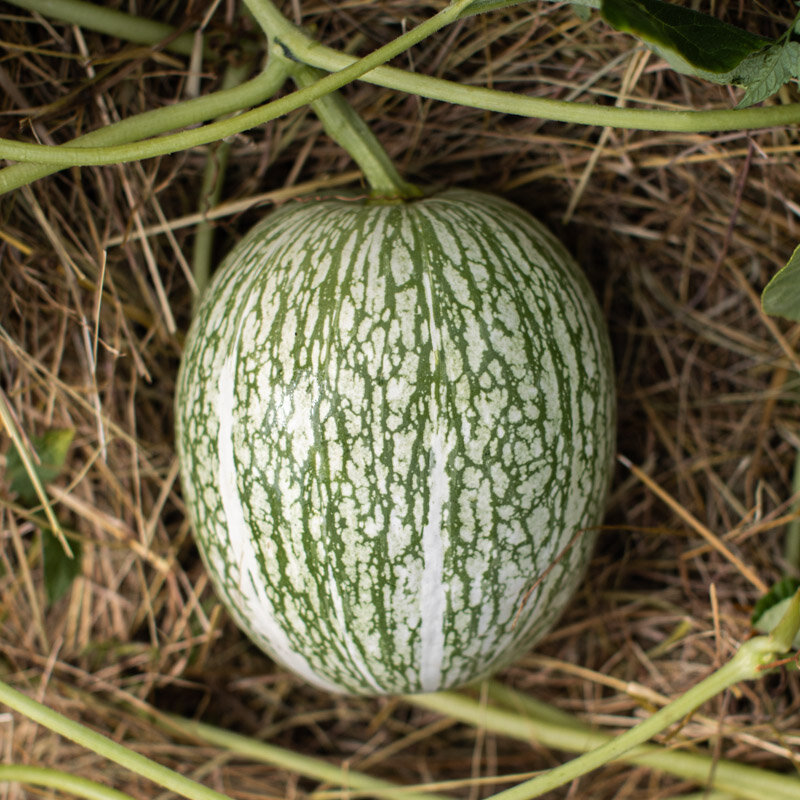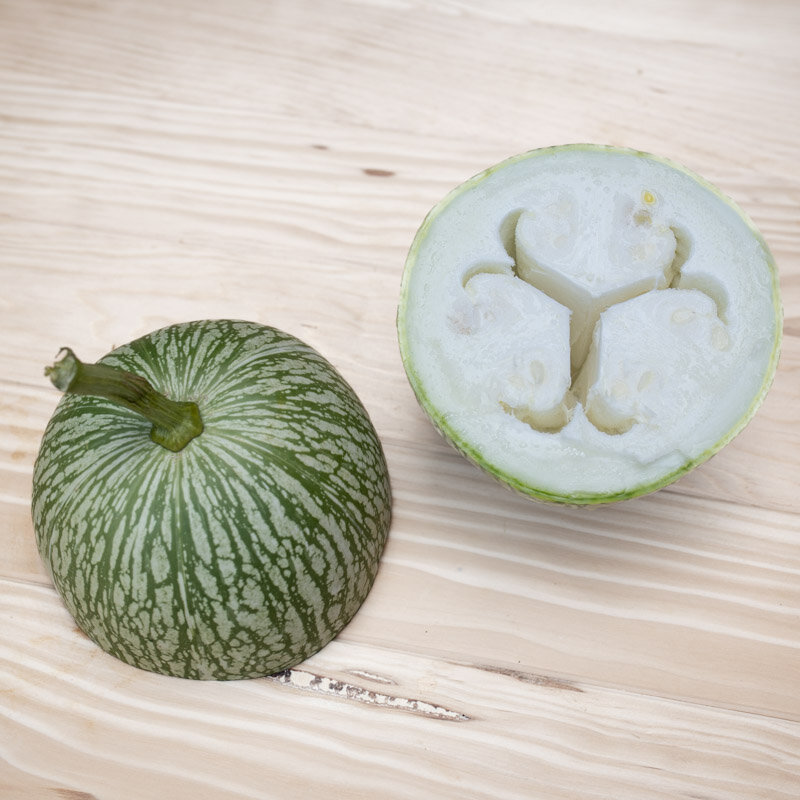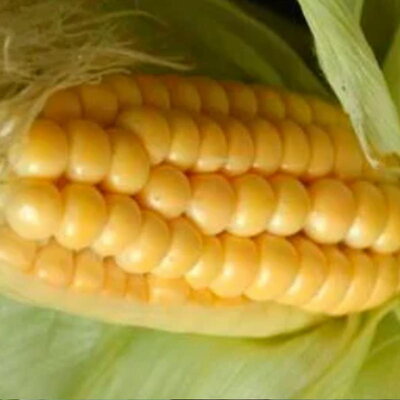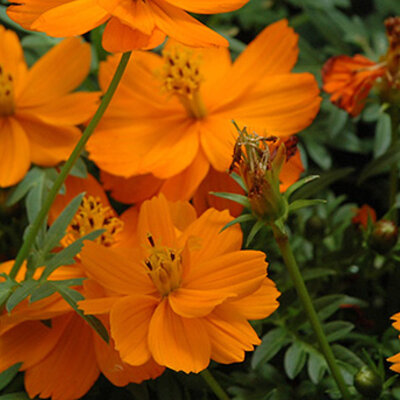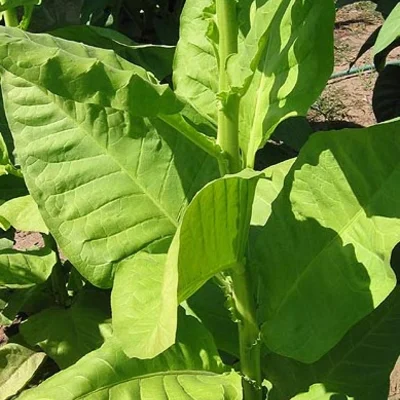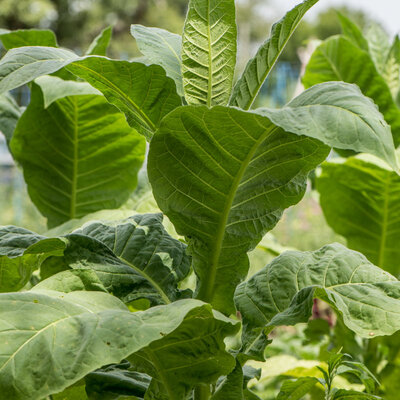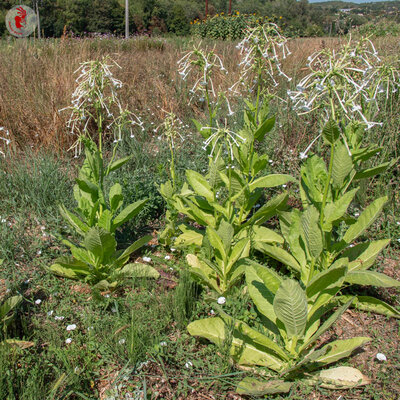Fig Leaf Squash - Siam squash (Ficifolia)
This variety produces 5 to 15 green, watermelon-like fruits with white lines and spots, weighing up to 6 kg. Their soft white flesh becomes very stringy when cooked.
This variety is ideal for jam-making.
What are the characteristics of Siam squash?
A cucurbit native to Mexico, the Siam or "Tzilicayotli" squash, Cucurbitaficifolia, first appeared in Europe in the early 19th century. The term ficifolia means "fig leaves", in reference to the shape of its foliage. This highly productive mid-season variety can produce up to 15 fruits, whose marble-green color and ovoid shape are reminiscent of watermelon. In the kitchen, its soft white flesh unravels into vermicelli-like strands (just like spaghetti squash).
This gelatinous perennial lives for several years in certain protected areas on the Côte d'Azur, and can be grown as an annual in other regions. The stems then lignify, retaining their high productivity.
How to grow Siamese gourd?
Siam squash can be sown from February to April in pots of 3 or 4 seeds, or from March to May in the ground.
If you choose to sow in pots, sow 2 to 3 weeks before planting out in the garden. Water lightly to keep the soil moist, and place seedlings at a temperature of between 18 and 20°C.
To sow directly in the ground, wait until the last frosts have passed, when the soil has warmed up. In the garden, prepare holes filled with compost or organic matter 2 weeks in advance, spaced 1.50 to 2 m apart in all directions, to accommodate the squash seedlings. This elusive plant can grow up to 15 m long and cover the garden. Install sturdy supports, such as a trellis, to enable it to grow on them and free up space in the vegetable garden.
Include companion plants in your squash planting to encourage flower and fruit growth while keeping pests at bay. Choose basil or beans, for example.
When to pick Siam squash?
This variety is harvested from June to October. Drying out of the stalks indicates that the fruits are ready to detach from the plants, but they don't need to be ripe to be eaten. Be careful not to pull out the squash, but cut as close as possible to the stem, 10 cm above the stalk.
How to store Siam squash?
If stored in good conditions, Siam squash can last up to 2 years. Choose a well-ventilated, dry location, at a temperature of between 10 and 12°C. Place the fruit, spaced apart and tail upwards, in high crates. They can also be frozen, after slicing and cooking.
How to cook Siam squash?
Like all squashes, this variety can be cooked in a variety of ways: in sauerkraut, soup, fritters, gratin... Its white, stringy flesh is used in a number of delicious recipes, but it is best appreciated in jam. Also known as "angel hair", this Spanish specialty is used to garnish cakes and croustades.
in the ground, in bucket
Sow in pots, in bunches of 3 to 4 seeds, at a temperature of between 18 and 20°C, 2 to 3 weeks before planting. After the last frosts, transplant the best seedlings into the ground, at a distance of 1.5 to 2 m in all directions. You can also sow directly in the ground.
This gelatinous perennial lives for several years in certain protected areas of the Côte d'Azur, and can be grown as an annual in other regions. The stems then lignify, retaining their high productivity.
March, April
April, May, June
September, October, November
in the ground
sunny
medium
humus, clayey, limestone
rich, drained
Cucurbita ficifolia
late
From 2000 to 6000 g
12 seeds
oval
fleshy
Green
edible
From 1000 to 1500 cm
From 20 to 30 cm
runner
Mexico
"Vegetables" by Désiré Bois
This ancient Mexican variety was named "Tzilicayotli" by the Aztecs, and in Spanish became "Chilacayote". The Siam squash is so named because its introduction to France dates back to the time when yaks arrived from Shanghai for the menagerie of the Muséum d'Histoire Naturelle in Paris. The boat had been loaded with these gourds to feed the animals during the voyage. A few fruits remained, and the seeds were sown at the Jardin des Plantes. In 1878, the botanist Désiré Bois reported in his book "Les légumes" that he had obtained 70 fruits weighing a total of 370 kilograms from 4 plants. One of his Mexican colleagues, Doctor Dugès from Guanajuato, harvested up to 80 fruits from a single plant.



